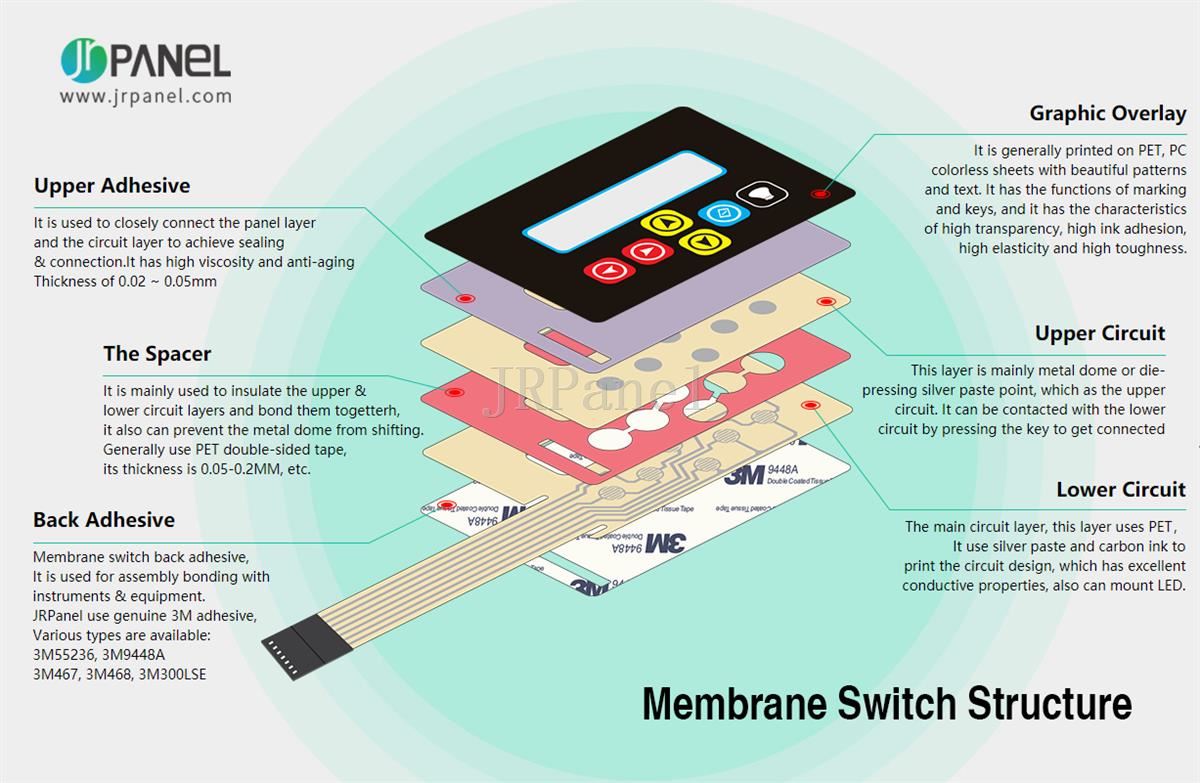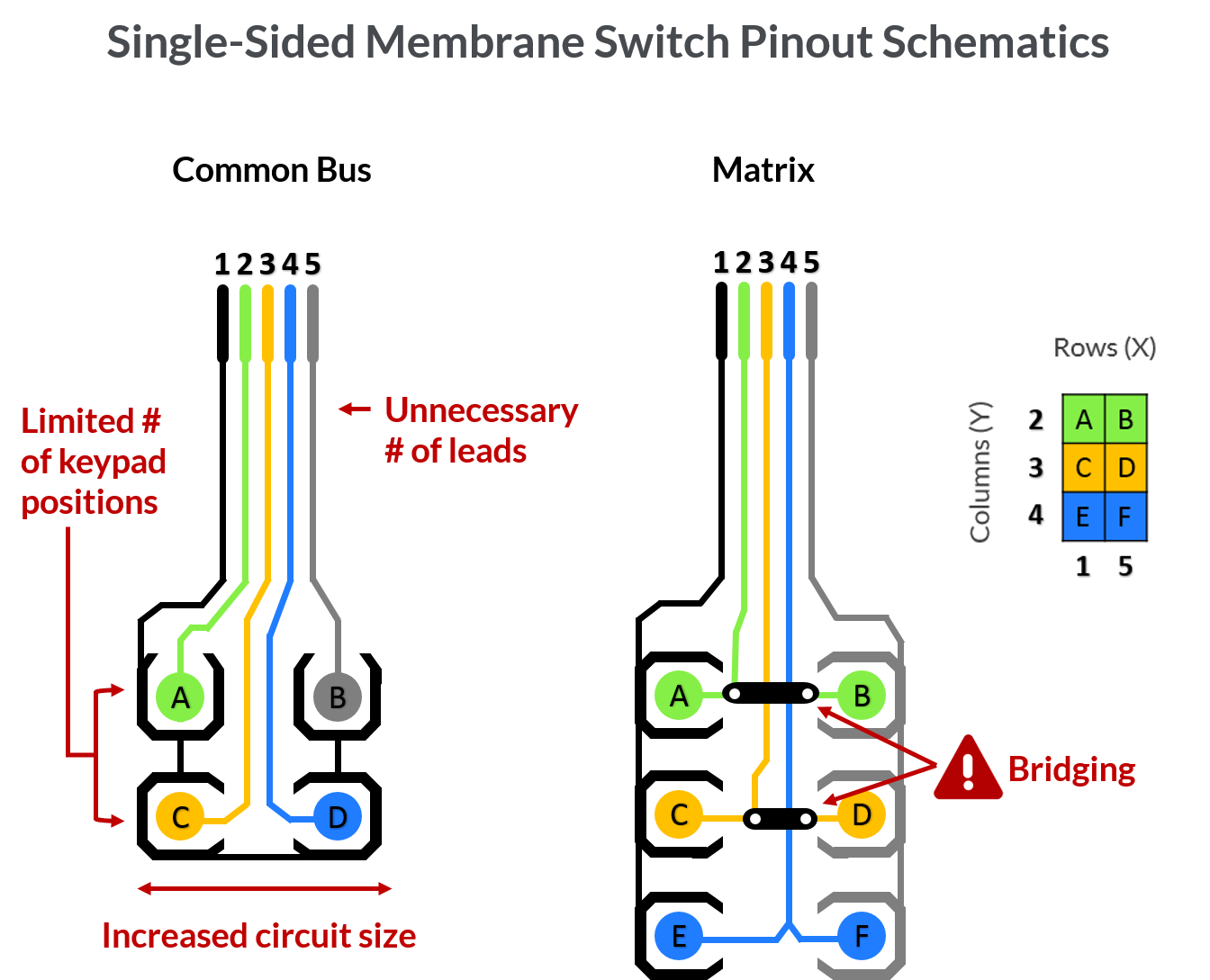How membrane switch supports sustainability in electronic product design
Comprehending the Value of Membrane Layer Switch Over in Modern Electronics
Membrane layer buttons are integral components in modern-day electronic tools. They provide a blend of capability and layout that improves user communication. Their lightweight and long lasting nature makes them appropriate for numerous applications. As industries evolve, the demand for personalization and advanced functions grows. Comprehending how membrane layer switches contribute to technology exposes their significance in shaping the future of electronic devices. What lies ahead for this technology?
The Essentials of Membrane Change Modern Technology
Commonly ignored, membrane layer button innovation plays a vital role in the contemporary electronics landscape. These devices, composed of numerous layers, act as user interfaces for various electronic items, varying from house appliances to medical tools. A normal membrane button includes a visuals overlay, a spacer layer, and a circuit layer, which are meticulously assembled to develop a practical interface.When stress is used to the overlay, the circuit layer is completed, permitting signals to be transmitted to the gadget. This modern technology is known for its versatility, making it possible for personalization in design, performance, and form to fulfill details individual demands. Additionally, membrane layer buttons are lightweight and slim, making them suitable for applications where area is a premium. Their toughness and resistance to ecological factors even more enhance their allure, guaranteeing they can hold up against rough problems while keeping performance. In general, membrane switch modern technology is important to creating easy to use and effective electronic tools

Secret Advantages of Membrane Layer Switches Over
Membrane layer switches over offer numerous key benefits that make them a recommended option in different electronic applications. Their style enables for a compact form aspect, making it possible for suppliers to create smooth and lightweight devices. Furthermore, membrane buttons are resistant to dust, dampness, and chemicals, which enhances their durability and durability sought after atmospheres. The tactile comments given by these switches can improve individual experience, making them easy and intuitive to operate.Furthermore, membrane buttons can be customized with varied graphics and shades, allowing for special branding chances. The production procedure is normally affordable, specifically for high-volume production, as it lowers setting up time and simplifies layout. Finally, membrane layer switches over need minimal maintenance, adding to reduced overall functional costs. These benefits emphasize their growing popularity in contemporary electronics, where integrity and straightforward user interfaces are essential.

Applications Throughout Various Industries
The flexibility of membrane changes allows their prevalent adoption across numerous industries. In the clinical area, they are generally made use of in analysis tools and patient monitoring systems, using a resilient interface resistant to impurities. The automotive sector utilizes membrane layer switches for dashboard controls, enhancing customer experience with smooth styles that withstand extreme conditions. In consumer electronics, they act as control board for gadgets such as microwaves and coffee machine, providing an easy to use user interface that is very easy to tidy. The aerospace industry employs membrane layer switches in cockpit controls, where reliability and room performance are extremely important. Furthermore, the industrial field leverages these buttons in equipment and control systems to guarantee robust operation sought after atmospheres. This broad series of applications emphasizes the versatility of membrane buttons, making them indispensable elements in boosting performance and customer interaction throughout varied technical landscapes.
Customization and Design Flexibility

Future Trends in Membrane Switch Over Development
Emerging patterns in membrane layer button development indicate an expanding emphasis on improved performance and integration with wise innovations. As consumer demand for extra advanced electronic gadgets rises, suppliers are concentrating on developing membrane switches that not just offer standard functional duties but also include features like touch level of sensitivity, backlighting, and haptic feedback.Furthermore, advancements in products are expected to improve longevity and ecological resistance, making membrane switches over appropriate for diverse applications in markets such as healthcare, automobile, and consumer electronic devices. The combination of capacitive touch innovation is likely to end up being more widespread, permitting sleeker layouts and boosted customer interfaces. membrane switch.Additionally, the rise of the Net read this article of Things (IoT) is motivating the growth of membrane switches over that can connect wirelessly with various other tools, improving interconnectivity. Generally, the future of membrane layer button technology shows up encouraging, driven by advancement and the pursuit of straightforward solutions
Regularly Asked Questions
How Do Membrane Layer Switches Contrast to Conventional Mechanical Buttons?
Membrane buttons, being a lot more space-efficient and providing a smooth layout, comparison with traditional mechanical buttons that give responsive comments. The previous typically include customizable graphics, while the latter generally assure longevity and reliability in various applications.
What Products Are Commonly Made Use Of in Membrane Change Manufacturing?
Membrane switches are usually created using products such as polyester, polycarbonate, and published conductive inks. These products supply responsiveness, flexibility, and durability, making them appropriate for different applications in digital devices and user interfaces.
Can Membrane Switches Over Be Fixed or Recycled?
Membrane layer buttons can frequently be fixed, especially if small problems develop, such as glue failure or surface area damage. Complete reuse is typically limited due to use and possible degradation of materials over time.
Just How Do Environmental Factors Impact Membrane Layer Switch Over Performance?
Environmental variables, such as moisture, direct exposure, and temperature to chemicals, greatly influence membrane button efficiency. Extreme conditions can result in deterioration, influencing responsiveness and long life, eventually compromising the capability of the device in various applications.
What Is the Common Life Expectancy of a Membrane Switch?
The common life expectancy of a membrane layer button typically ranges from 1 to 5 million actuations, depending upon aspects such as usage frequency, environmental problems, and the products utilized in manufacturing, influencing toughness and efficiency longevity. A normal membrane layer button consists of a graphic overlay, a spacer layer, and a circuit layer, which are diligently assembled to produce a useful interface - membrane switch.When stress is used to the overlay, the circuit layer is finished, permitting signals to be sent to the gadget. The tactile comments given by these switches can why not try here enhance user experience, making them simple and intuitive to operate.Furthermore, membrane layer buttons can be personalized with varied graphics and colors, permitting for special branding chances. As consumer need for much more sophisticated electronic tools rises, makers are focusing on developing membrane changes that not only serve fundamental functional roles but also include functions like touch level of sensitivity, backlighting, and haptic feedback.Furthermore, improvements in products are anticipated to reference enhance resilience and ecological resistance, making membrane layer switches suitable for diverse applications in industries such as healthcare, automobile, and consumer electronic devices. The combination of capacitive touch modern technology is most likely to come to be more common, allowing for sleeker designs and boosted user interfaces.Additionally, the increase of the Internet of Things (IoT) is motivating the growth of membrane layer changes that can communicate wirelessly with other gadgets, enhancing interconnectivity. Membrane buttons, being much more space-efficient and providing a streamlined style, comparison with traditional mechanical switches that supply responsive comments